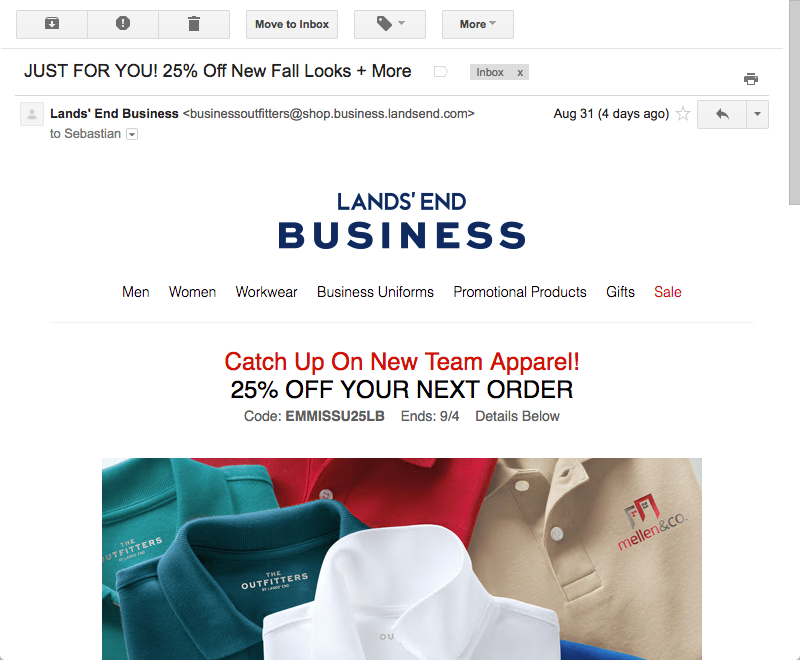Email marketing is the most effective way to reach your audience. And for several years now it has had the highest return on investment compared to all other ways to reach your audience including TV or radio ads, bulk mail, and even social media campaigns.
But there is one rather significant caveat, which causes many businesses to struggle with email. And it is not that fact that you need to have subscribers.
“How do I prevent all my emails going to spam?” is probably the question I get asked most often. And yes, deliverability is a huge topic. But when I drill down into what is going on, I often discover that the issue is not that the emails don’t get there. The issue is that the subscribers ignore them.
So, how do you write emails that get opened and read? Before I answer that, let me circle back to deliverability. As I said, optimizing your deliverability is important, because – well – if they don’t get your emails, they can’t read them. But, incidentally, writing engaging emails that your audience can’t wait to open and read is one of the strongest signals you can create that your emails are not spam and should always be delivered to your audience’s inboxes.
There are a few other factors that affect deliverability, and I’m covering the more important ones in my free ebook The Infusionsoft Profitability Playbook. If you haven’t gotten that one yet, do so now. I’ll wait here – promise.
Got it? Great. Let’s continue.
Why don’t my subscribers open my emails?
There is one thing I need you to understand before I continue: The email open rate cannot actually be measured. What the different email service providers report as your open rate is a rough approximation at best.
But that is not actually a problem, as the open rate is not a useful metric in the first place. Much more meaningful (and significant) is the click through rate. How many of the subscribers that got your email ended up clicking on the link? That is the number you should track.
So why did I call this article something with “opened”? Quite simple: It makes for a catchier title. But now you know that we really should be talking about:
Why aren’t people reading my emails nor clicking on the links?
That comes down to three problem areas: Style, Topic, and Subject Line
Let’s take a look at each of them, one at a time.
1) Be yourself
A lot can be said about email style. That starts with the optical layout and goes all the way to “finding your voice.” You could squander the question if you should include images in your emails (you shouldn’t) or if you should put a menu bar to your website in the email’s header (again, you shouldn’t). You could talk about font choices and coloring options.
And depending on your audience, it might even make sense to go against the grain and send your emails with many images and text in in bright red letters. But in most cases, you should keep your email as close to an email you would write to a friend as you can.
So what does that mean? Well, let’s compare two emails I recently got. One from Land’s End Business Outfitters and one from Jeff Walker, the “Launch” guy.
First the Jeff Walker email:

Starting with the FROM address, through the subject line and the email content all the way to the call to action, this email feels like a friend or acquaintance wrote it. (And if you feel completely repelled by this email, stick with me.)
You might know already that Jeff Walker is a reputable guy/brand. He sends out generally well-written emails and has a high-quality product with a great guarantee. But, even without knowing that, you might click the link, just because this email piqued your curiosity.
Let’s compare that to the Land’s End Email:

You can already see that it is a very corporate feeling email. Your sales radar probably went off right away causing you to question anything you see in that email.
Now, Land’s End is also a reputable company that delivers a high-quality product and has an excellent warranty on top of that. Their emails are also generally well designed.
That means, if you are looking for a new shirt at the time you get the email, you might be compelled to click on the link.
But, if you didn’t just think about needing a new shirt the day before, you’re likely going to completely ignore that email.
So, which one is better? We all do business with humans. So in most cases, you want to appeal to that: You what you want your emails to feel like they came from a friend.
To achieve that, you have to do three things:
- Put your name in the from address. No info@… email addresses, please.
- Write a compelling subject line. (See the 3rd tip.)
- Be yourself, when writing. And what I mean with that is, don’t try to write in a style that you think will appeal to your audience. Instead, write in your own, personal style. That will likely repulse a few people. But the people that aren’t turned off will be attracted even more. That are the raving fans that you need to be really successful in business.
So, when it comes to writing compelling emails, just be yourself and write in your own style. Oh, and put a story in, at least every once in awhile.
2) Don’t be boring
While you might think, that being boring has more to do with your style, it is a much larger “topic.” The opposite of boring is engaging. And only a small part of being engaging is due to your style.
The bigger part is talking about a topic of interest. What that translates to is simple: To get your audience to read your emails, you need to write about something they want to read. (Duh.)
But here lies the crux. A lot of entrepreneurs fall into the trap of believing to know what their audience wants or needs to be concerned with. However, in the vast majority of cases, that does not match what their audience wants to read.
The thing is that there is one big problem that is keeping your ideal client up at night. And your job is not to teach them how to get rid of the problem. (Surprised?)
Your job is to join the conversation that is already going on in their head. Only as a second step, you can be concerned with helping them improve their life by fixing their problem.
If you start out with that, with the teaching part, your audience won’t even listen. Instead, pick them up where they are and carefully guide them to the solution.
By the way, figuring out what their audience wants to hear is one of the things I help my one-on-one email marketing clients achieve. If you know that you need to step up your email marketing game, but you feel a little overwhelmed by the idea of doing all these things by yourself, schedule a FREE Email Marketing Strategy Session with me.
During this call, we can discuss how to make the advice you found here work for your business and even plan what to add to it to accelerate your growth even further. And the best thing is, there is no obligation. You’ll get a ton of value out of this session even if we decide not to work together afterward. But, if we both decide that working together is a good move, we can discuss that during this session, too.
If that sounds like something you would be interested in, fill out the application. But know, that I can only take on a handful of clients at a time to get you results. So now’s the time to get on my schedule before it fills up. If this is something you’re interested in, click the link to apply for your free email strategy session.
3) Write Killer Subject Lines
The subject line is the second most important thing (after the FROM email address and name) that makes your subscribers decide if they should spend time with your email. It works in tandem with the first few words of your email that most email programs now display before you open the email. (Those first words are sometimes called pre-header and some email service providers allow you to edit this text independently from the actual email content.)
Entire books have been written about how to write the perfect subject line. And while that is possibly the most overused excuse, I still don’t believe I can do this topic justice in just a few lines. So instead of attempting the impossible, let me just tell you about a few great articles on the subject:
- 5 general tips to consider when writing your subject lines, on the emma blog
- 5 Catchy Email Subject Lines to try out, written by the people at Outreach.io
- More than 150 example subject lines with explanations of why they work, collected by (the) optinmonster
4) Include a Call to action
“Hold on – didn’t you say you had 3 tips?” – Yeah, I did. But this additional one is kinda important.
This is also a topic that I can say more about than fits in a few lines, and I don’t want to overextend your patience, so let me be brief:
You know by now that you not only need to get your audience to open your emails but more importantly, you need to get them to read your emails and click on your links.
You get your audience to read your emails by being yourself, picking a topic that they are interested in and letting them know about it in a killer subject line. To get them to click now, you need to do only one thing:
You need to include a call to action in every email.
How to do that effectively, will be the topic of tomorrow’s post.


